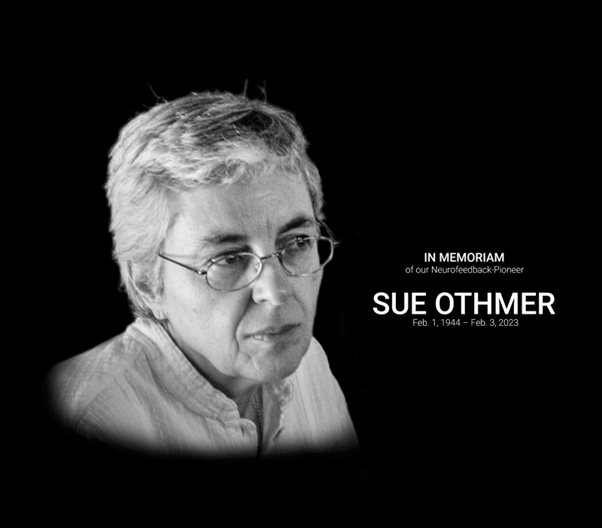In memory of Sue Othmer
When neurofeedback was discovered more than forty years ago, the potential of this therapy could be imagined, but at the same time countless questions arose from the beginning: what exactly is happening in the brain? How can the effects be explained? And, above all, how can effective approaches be developed for practical use, and how can the effects be measured? Challenges that persist to this day.
Sue addressed these very questions with an uncompromising focus: for her, the patient's symptoms came first, as well as observing their changes through neurofeedback. Her tireless, accurate and systematic observations of the effects in hundreds of thousands of neurofeedback sessions, enabled continuous development always based on previously known procedures. In doing so, she set new and unrivaled standards. The essence of scientific work and the spirit of the definition of evidence-based medicine were central. Guided by the highest respect for the patient's suffering, she worked with captivating curiosity. The Othmer procedure will be the reference against which new procedures will be measured for a long time to come.
Sue's scientific training and love of nature are reflected in her manner and work. Like few others, she was able to present and teach the complexity of the brain and the principles of self-regulation on which the entire clinical model of the method is based in a simple, clear, concise and very understandable way. She was concerned that therapists truly understand the neurofeedback process in order to address the needs of each brain individually in therapy.
Thus, Sue has also been passionate about sharing her knowledge and training to thousands of therapists over the decades. Today, her teaching is the basis for a large network of training institutions in 19 countries and 15 languages. Sue was uncompromising on this point as well: procedures were only included in her teaching and given the go-ahead when they were so practical that they could be used in daily clinical practice.
Through all her work, she has enabled countless people with long suffering to lead a life worth living and self-determined. Every day, tens of thousands of patients around the globe benefit from the effective therapy she has made possible.
We have had the honor of working with this outstanding figure in research and development for more than 15 years. We think of Sue with the utmost respect and appreciation, who will forever be remembered as an exceptional clinician and inspirational teacher & mentor.
We mourn her passing. The world is poorer by one incredible person.


